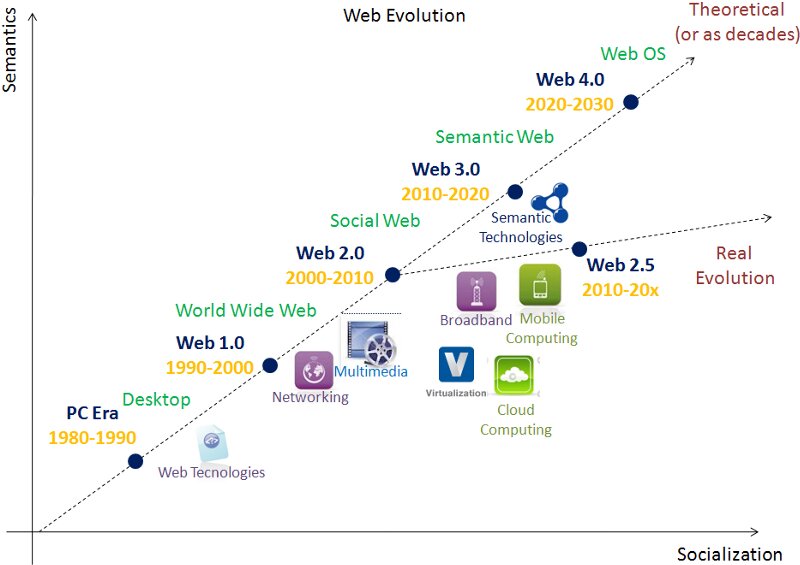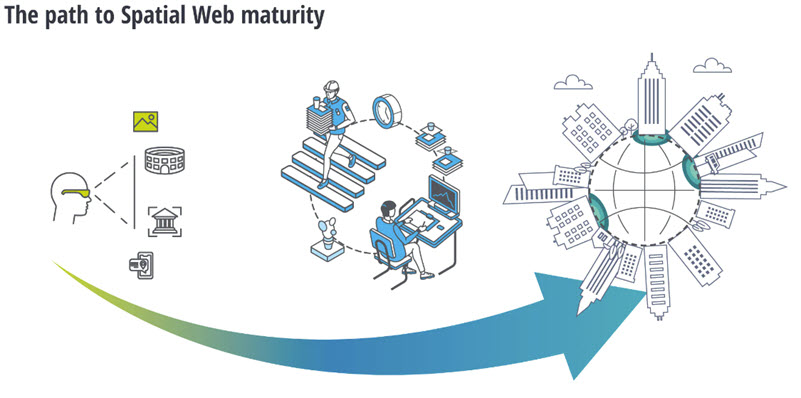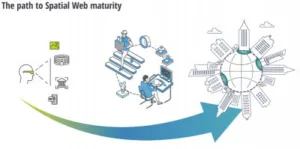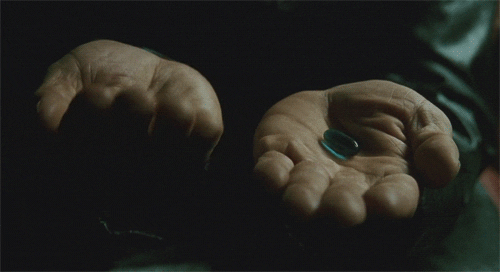We don’t want to brag but we were active in the Web 3.0 world before folks decided to slap a name on it and say it will be worth $23.3 billion by 2028. Yep! Back when we were just a little kid, we had a gang of tough, good-lookin’ guys who did everything together. Whenever something went wrong around our place, it was always their fault!

 “I was accosted by three painted women. Your streets are made unsafe by shameless, diseased hussies, rapacious pickpockets, and insidious opium-smokers.” – “Elmer Gantry,” Warner Bros 1960
“I was accosted by three painted women. Your streets are made unsafe by shameless, diseased hussies, rapacious pickpockets, and insidious opium-smokers.” – “Elmer Gantry,” Warner Bros 1960
Female friends? Well, we don’t want to brag but… Money? Sheess, we were rollin’ in it! We grew up and BAM! it all disappeared. It wasn’t until somewhere between Web 1.0 or Web 2.0 that we went online, connected with the library down in Sydney, AU, and “strolled” through the stacks and “leafed” through some of the country’s/city’s history books.
Awesome!
And now, as we enter the world of Web 3.0, we have people offering us big chunks of Bitcoin and NFTs of priceless art that will be safely/securely held “there” for a few hundred/thousand real dollars. Yes, the Spatial Web does, sorta, kinda exists.
 Slow Progress – There are Web 3.0 tools that have been developed and are constantly being refined to take business, industry and people to the next level, but they are still works in progress as are things like the gateway and use of virtual worlds. But it will happen…slowly. Source – mdpi
Slow Progress – There are Web 3.0 tools that have been developed and are constantly being refined to take business, industry and people to the next level, but they are still works in progress as are things like the gateway and use of virtual worlds. But it will happen…slowly. Source – mdpi
And as long as you’re not trying to sell us the Brooklyn or London Bridge, we’ll agree with you! Folks have been rushing for more than 10 years to say they know what it is, want you to invest a bundle of real money in their version and they’ll make you filthy rich. You’ll be on the ground floor of the greatest thing since the IC (integrated circuit).
Don’t get me wrong. Web 3.0 or the Semantic Web pieces, segments and tools like AI (artificial intelligence) and ML (machine learning) have been around and are being effectively used and enjoyed daily.
The difficulty is that it’s not an application or two or a game or two. Instead, it’s decentralized applications (DApps)/services that run on blockchains – decentralized networks of peer-to-peer servers. The holy grail is ultra-high-quality services on a stable, secure decentralized network. Web 3.0 may get here eventually, but a lot of work has to be done over the next bunch of years.
Folks who work at convincing you it’s here (almost) have a lot in common with bible-thumpin’ Elmer Gantry. But what is almost here is the virtual world that folks have been playing in for several years. Of course, Hollywood has its own versions of life in the semantic environment.
But it’s been oversold, over promised and over projected for years so, if the subject gives you a headache, join the crowd. Laurence Fishburne (Morpheus) gave Keanu Reeves (Neo) the opportunity to get into and out of the real or virtual world in The Matrix by choosing one of two pills – and yes, his special, cool AR/VR glasses. His instructions were real simple,
“You take the blue pill – the story ends, you wake up in your bed and believe whatever you want to believe. You take the red pill – you stay in Wonderland and I show you how deep the rabbit-hole goes.”
Tough choice–the cold hard real or fake reality.
Fortunately, he picked the right pill because it led to some great sequels and a so-so video game. Of course, in the movies, games get better. Last year, Free Guy showed you could actually spend your entire life in games like Free City simply by putting on or taking off the glasses.
Once he found out he wanted to make a difference like Neo did and said,
“I know this world is just a game, but this place, these people, that’s all I have. So, I’m not gonna be the good guy. I’m gonna be a great guy.”
The whole idea was that life doesn’t have to be something that just happens to us. But with Hollywood, nothing just happens as we saw what happened in the pre-pandemic Ready Player One.
Even as far out as 2045, the tech industry is still struggling to help folks move back and forth between the real and virtual worlds. And the producers didn’t show any clear winner because they used Meta/Facebook’s Oculus Rift, HTC’s Vive and Microsoft’s HoloLens.
Zuckerberg believes in the virtual world so much he took a word that has been around forever and said, “this is going to our new face of Facebook.” Then he dropped more than $15 billion into the company’s Reality Labs venture to make his cumbersome Oculus Rift VR headset real and showed how they were going to perfect the metaverse.
On his first pass, he had cute cartoon avatars bobbing around in meetings, at business conferences and doing everything real folks could do face-to-face, but he forgot to give them legs/feet. And like Gantry’s spellbinding pitch, folks ran to buy offices, stores, stuff in the new world. Well yes, he’s having a tough time convincing his own people that they have to come back to the office and work more in the metaverse and you’ll see how great it is.
It’s been a tough sell because thinking people ask if they are going to work in this fantastic virtual world why do they have to be in the office? Come on folks, give the bible thumper some slack. If you put on the expensive goggles that “almost” work and squint real hard, you can darn near see it.
 Virtual Productivity – VR has proven it is a valuable tool to prepare people for critical and sometimes dangerous work as well as to quickly make, break and refine next-generation products.
Virtual Productivity – VR has proven it is a valuable tool to prepare people for critical and sometimes dangerous work as well as to quickly make, break and refine next-generation products.
Don’t get me wrong, there are real world applications for VR – healthcare, technical training; military, police, pilot training; product design; retail/tourism; real estate, architecture, interior design; sports, fitness, wellbeing; and lest we forget, video games. When VR was introduced, industry analysts everywhere said the goggles would change gaming forever and according to Godman Sachs (and other analysts), the mass adoption would overpower the $99 billion TV market by 2025.
Fortunately, there are also some sane, credible people in the industry who understand the hardware still needs some user improvements like motion sickness, platform accessibility, physical hardware setup, system compatibility, motion control and onboarding. In addition, it needs a lot of software design, development, testing and tweaking to deliver mind-boggling, super-immersive games.
According to pixelated friends like Jon Peddie, Jon Peddie Research, and Mark Poppin, BTR (BabelTechReviews) who play, test, analyze VR and other games as well as the tools, technology needed, only a few meet folk’s critical expectations. Many are underdeveloped and overpromised, while most fall into the WTF bucket.
 Protection – People have to understand that thinking about, talking about and promising tomorrow’s solutions doesn’t make them so. Some people understand that some things really aren’t true no matter how exciting they look.
Protection – People have to understand that thinking about, talking about and promising tomorrow’s solutions doesn’t make them so. Some people understand that some things really aren’t true no matter how exciting they look.
But there are people like Chris Milk, CEO of Within, who hasn’t tried to convince folks that VR apps and games are a slam-dunk without the right hardware. That’s probably why Jensen Huang, CEO of Nvidia, has taken a different approach to help designers/developers do it right. After all, the company’s GPUs (graphic processor units) and graphic cards are key power tools for designers, developers, producers, content creators and serious game players.
The company’s Omniverse platform, which is being widely used across businesses and industries including entertainment creation doesn’t just promise the virtual world, they’ve developed and made available a growing number of AI tools that will help folks create whatever 3D world’s fertile minds can conjure as well as model your real, physical world. And speaking of physical world, the company is developing a digital version of Earth (E-2) to help predict climate change. Maybe all of those AI and ML tools can even help folks make the changes that are needed to save us from ourselves. Hey, in the virtual world anything is possible!
Of course, the premier entertainment company, Disney, has also committed to The Next Great Storytelling Frontier.
The company’s Accelerator Program, which will help developers use AR, VR, AI and blockchains to develop solutions that will allow people to interact with their favorite characters, buy NFTs from movies and even be in their movies/shows. The program will help up-and-coming innovative firms by providing time, funding and guidance to develop the next generation of real/virtual entertainment. The once-crisp line between the digital and physical worlds has already begun to blur and there have been a lot of advances made but it will still be a long time before we get “there”.
 Spatial Stages – The spatial web and VR are still at the earliest stage of growth with people developing the products, tools, procedures we’ll need for tomorrow. Then we’ll have to optimize them and incorporate them into normal work and life so they are accepted as normal … that takes lots of time. Source: Deloitte
Spatial Stages – The spatial web and VR are still at the earliest stage of growth with people developing the products, tools, procedures we’ll need for tomorrow. Then we’ll have to optimize them and incorporate them into normal work and life so they are accepted as normal … that takes lots of time. Source: Deloitte
Web3 will take time to be adopted. People and organizations have to come to understand that we’re all learning as we go. It will entail work in all of the areas – projected data, AR, VR, MR and a range of other technical tools that have to be developed, understood and mastered. Meanwhile, companies and industries are making incremental progress delivering engineered solutions for hardware, firmware, middleware and software.
Slowly – and sometimes painfully – it will creep into our everyday lives, and we’ll use it without even realizing it’s different but normal. One of the keys for the content creation/production industry is the need for something like the next generation of Epic’s Unreal Engine which will dramatically change the way immersive content is developed, produced and experienced. Then game and video content producers will have to learn – often painfully – how to use it to deliver the immersive worlds.
None of that happens overnight.
 Source – “Elmer Gantry,” Warner Bros
Source – “Elmer Gantry,” Warner Bros
But the good news is that the paradigm has shifted, and progress/success is happening in the hardware, software and most of all in helping people understand how it all works together and what it can do for them.
In other words, under promise and over deliver because as George Babbitt in Elmer Gantry said, “I’m for a free press, for free enterprise… and for whatever the hell the other freedoms are!” (AM)
# # #
Andy Marken – [email protected] – is an author of more than 700 articles on management, marketing, communications, industry trends in media & entertainment, consumer electronics, software and applications. An internationally recognized marketing/communications consultant with a broad range of technical and industry expertise especially in storage, storage management and film/video production fields; he has an extended range of relationships with business, industry trade press, online media and industry analysts/consultants.








